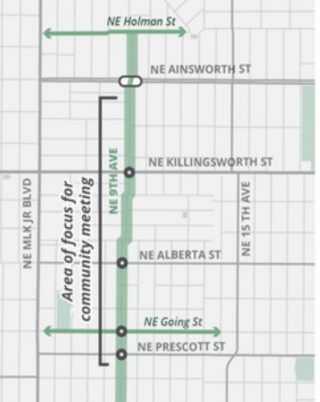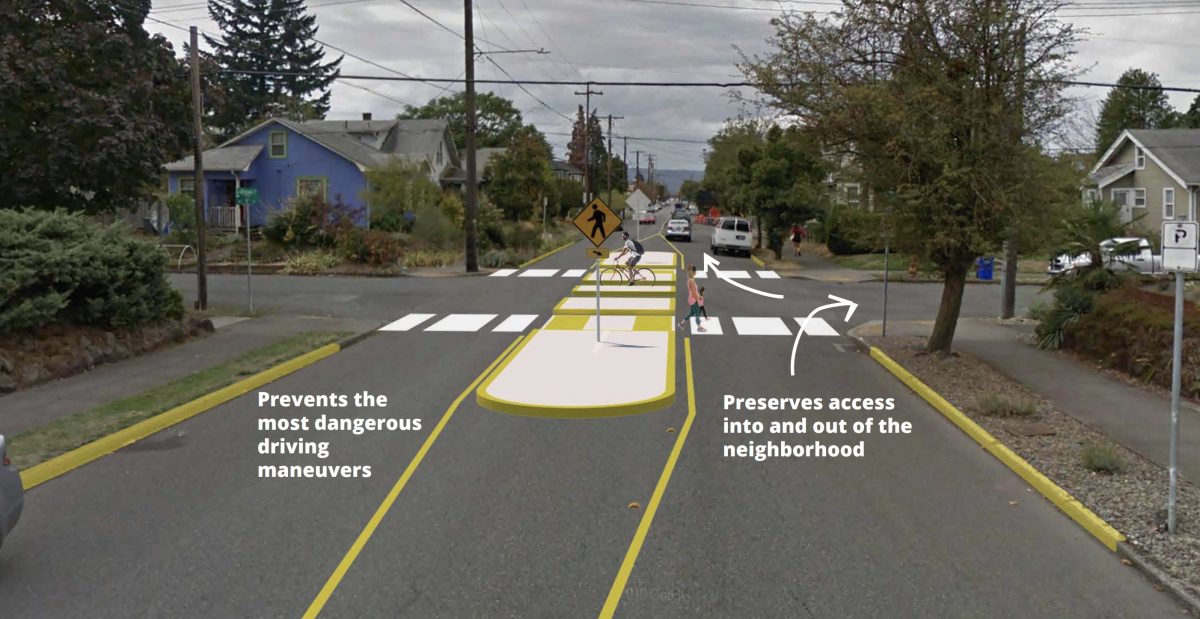
The city’s effort to create a low-stress, family-friendly street between the Lloyd and Woodlawn neighborhoods received yet another test last night. Despite steady rain there was a sizable turnout at a meeting held in the King Neighborhood to hear more about plans for the northern section of the project.
The Portland Bureau of Transportation began this project in March 2016. Back then they heard very strong support for traffic diverters on NE 7th Avenue, the street that makes a direct connection to the forthcoming Earl Blumenauer Bridge over I-84. When the plans were first released in July 2018 they were the most ambitious greenway concepts we’d ever seen. While many people celebrated the plans, others were incensed and felt that PBOT had once again failed to fully comprehend the existing anger around gentrification and legacy of institutional racism present in the adjacent neighborhoods.
PBOT has spent the past year working more closely with black residents and adjusting the plans accordingly. As recently as this past July, even a pared down version of the plan was met with anger and objection.
Last night they tried again. On the table was a single diverter they’d like to install on NE Killingsworth at 9th Avenue (see lead image).
Before the discussion began, PBOT Capital Programs Division Manager Millicent Williams tried to set the tone in a prepared statement she read prior to the official presentation:
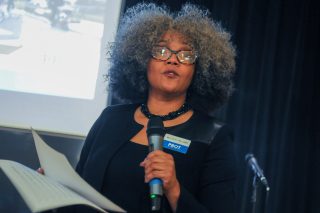
“We recognize that many of you in this room and in this community at large have experienced transportation-related trauma and pain. Some challenges dating back over 50 years… We recognize that if we are going to be a bureau and city that demonstrates care, concern, and compassion for all, we have got to acknowledge our contributions to that pain and perform our work differently. That is why we are here. While re-framing our overall work will take some time, there are things that we’ve already done and that we can do today to demonstrate our commitment to showing up differently. We are here to ask you about how you feel and what you think — not to just ask your opinion and check a box. We will use the information you share to inform our main planning, design — and ultimately construction — of a project that responds to your requests and reflects your desire, some that have been voiced for 40 years and have been unheard and unattended to. Tonight’s conversation is for you. Tonight’s conversation is about you. The decisions that are made will affect you. We want to hear the chorus of voices, discuss your opinions, demonstrate professionalism and responsiveness, and become your trusted partner… This is your community and your project, let’s work together to get meaningful outcomes.”
After Williams, a half-dozen PBOT staff presented on different aspects of the project.
PBOT Capitol Project Manager Nicole Pierce said the goal of the project was to, “Find other ways for people to move safely around the city,” and to create streets that pass the “basketball test.” “Where kids can play basketball in the street and not have to worry too much about traffic.”
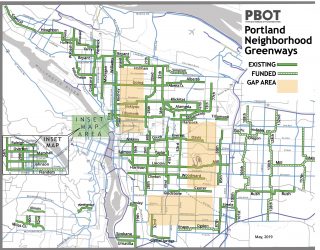
Project Manager Nick Falbo said this part of Portland is one of the remaining gaps in the city’s vaunted greenway network. He also apologized for PBOT’s last attempt. “We got it wrong. It was an over-engineered proposal that wasn’t grounded in community engagement and wasn’t well-received.” Falbo said the city heard loud and clear that their previous diversion plan for 9th was considered by some people as being, “overly restrictive to car traffic,” and “trying to solve a problem many in the neighborhood didn’t think they had.”
Falbo said PBOT’s new approach was to “find a lighter touch in this part of the neighborhood that could improve safety while still preserving neighborhood [driving] access.”
Advertisement
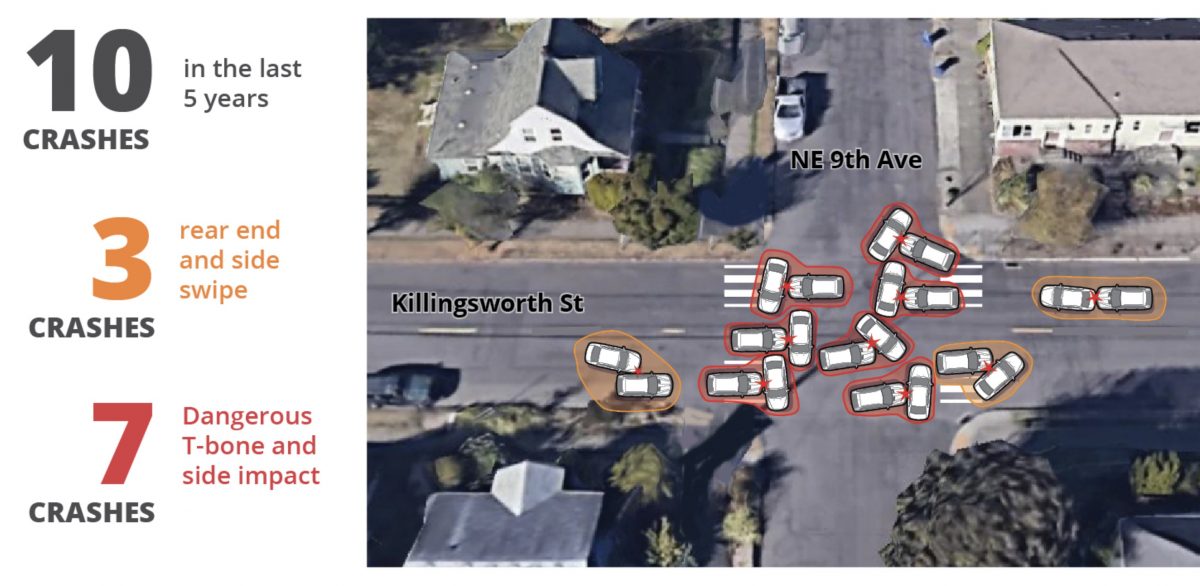
That “lighter touch” is to make relatively minor changes on NE 7th and create a greenway on 9th. There was no mention (and there hasn’t been any progress) of getting the route through Irving Park. The plan will do standard greenway treatments — speed bumps, fewer stop signs, 20 mph speed limit, striped crossings, and so on — for most of the route. The only traffic diversion would be at Killingsworth. That is, if PBOT feels enough people support it.
Throughout the meeting PBOT made it clear to attendees that the public would hold the power this time. “We want to put you in control,” Falbo said. One PBOT slide called their design merely an “idea” not a “proposal”.
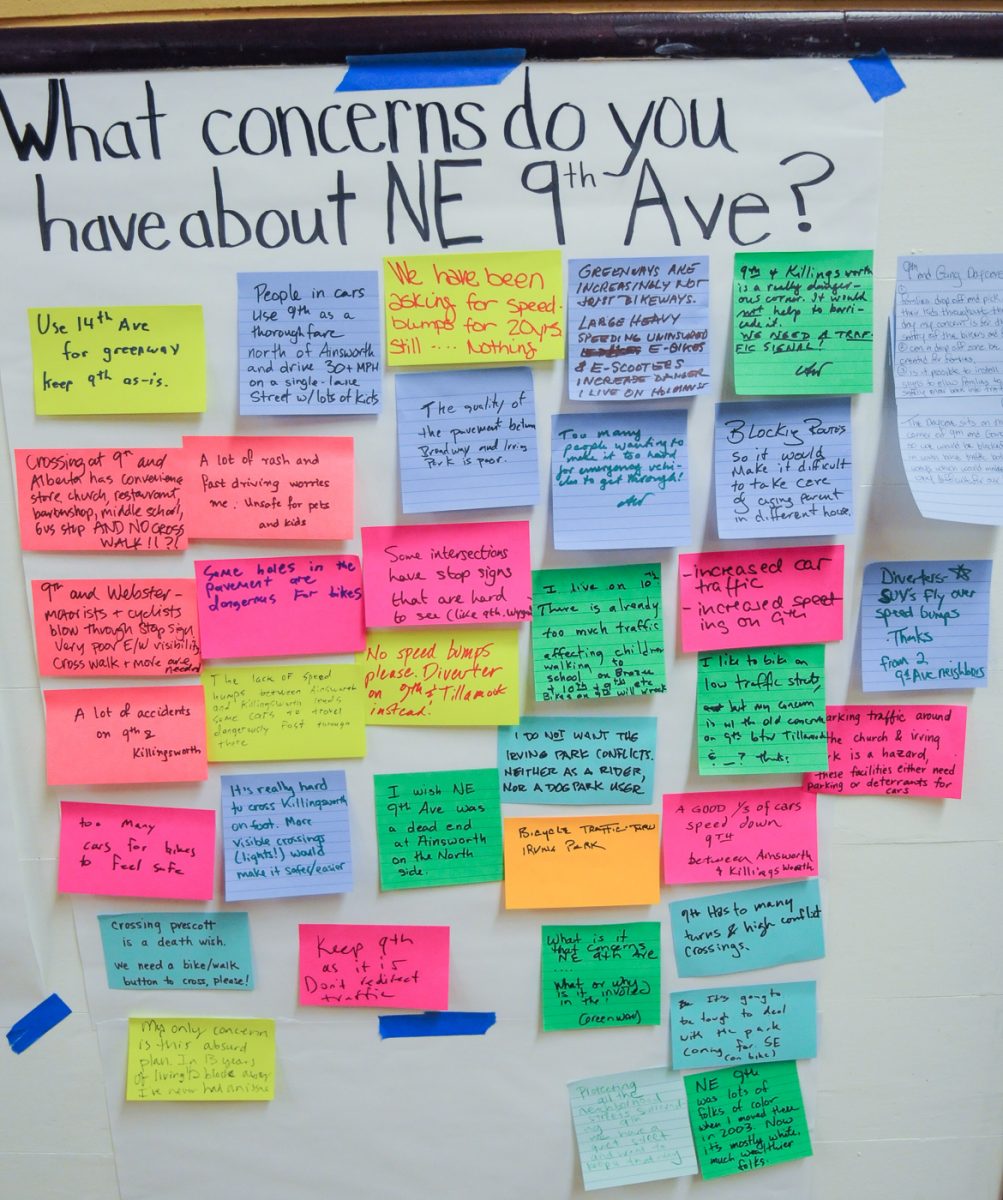


The design is basic and it’s similar to many existing diverters citywide (such as N Rosa Parks and Michigan, NE Going and 15th, etc.). It would prohibit car and truck drivers from crossing Killingsworth at 9th. PBOT is already building a new crossing here with striped crosswalks and median islands as part of a Safe Routes to School project.
After the presentation, people were able to voice their concerns. They asked a barrage of questions, most of which PBOT was able to answer satisfactorily. Everyone who spoke out was opposed to the new diverter.
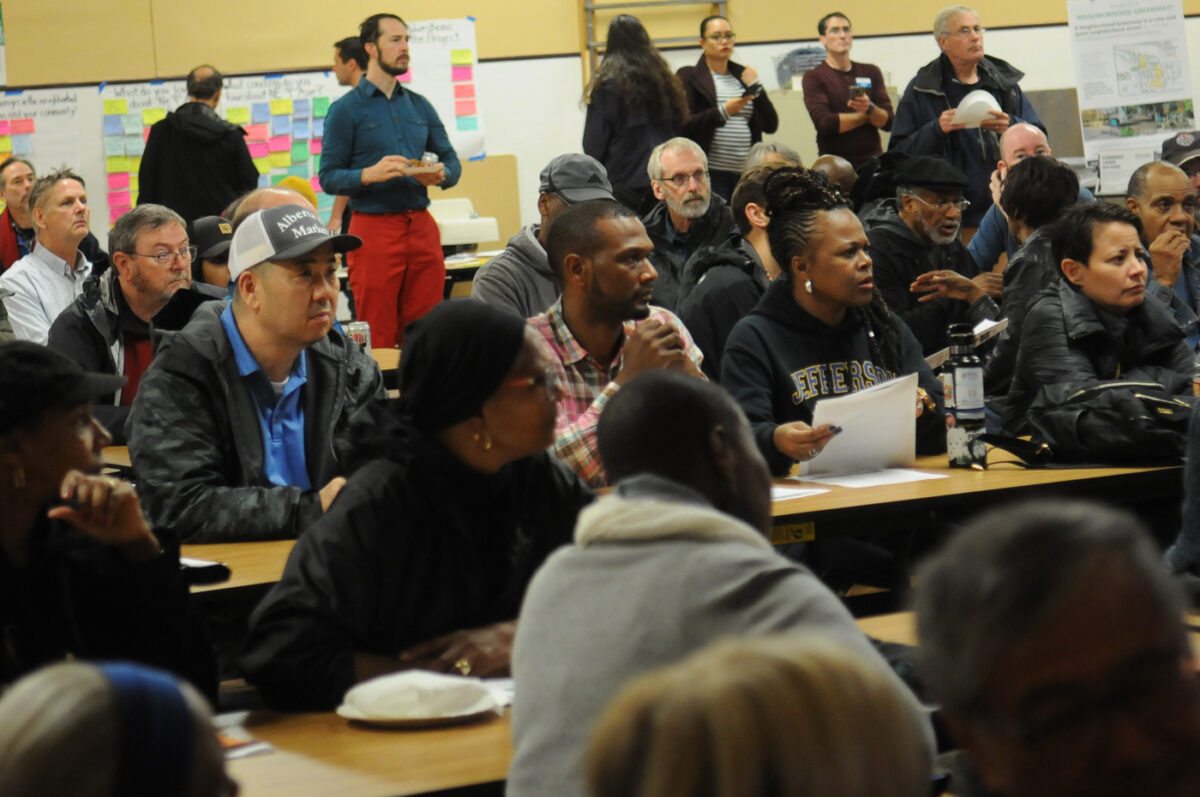
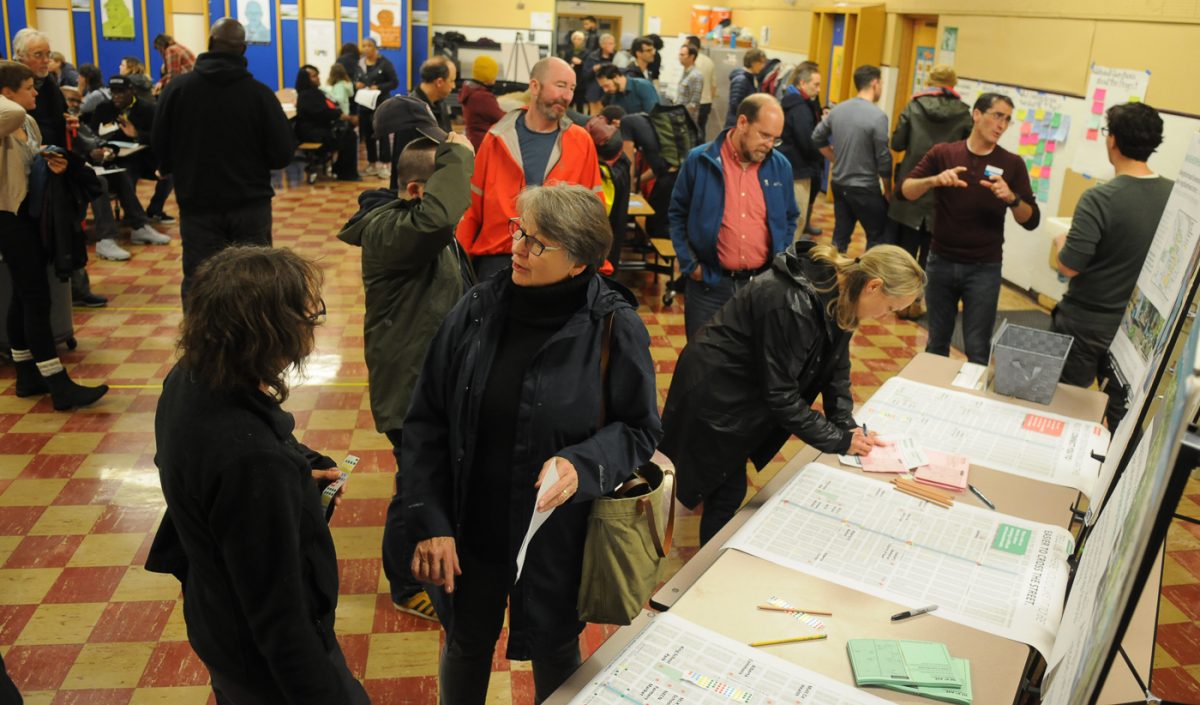


“We need to go down Killingsworth and we need to be able to come back,” one woman said. “And that doesn’t allow it.” She feared people would cut over a block sooner and “speed through” narrow side streets. “We have to live through this,” she said. “We already so no!”.
“What’s happening is that you’re appeasing a lot of the people that are coming into the community, and you need to listen to the residents!”
Another man was worried about congestion: “The fact that you have already taken away Williams and Vancouver and turned two lanes to one, it’s already created a lot of emissions from people waiting in traffic on MLK, and on 15th,” he said. “So why don’t you be more proactive and think about things that are actually going to speed up that traffic flow on MLK?! I use 9th because those other roads are already clogged up.”
A woman sitting nearby agreed with him. “I’ve lived in Oregon all my life. I know we have a lot of newcomers here… I don’t believe we need to be sitting in line with congested streets because they’ve taken lanes away and now the cars are backed up causing more pollution… What’s happening is that you’re appeasing a lot of the people that are coming into the community, and you need to listen to the residents!” (Note: Congestion and idling does not create more emissions than free-flowing traffic.)
Advertisement
At the end of the meeting I met Kellie Shaw, one of the outspoken critics of the project. She’s against the diverter in part because it would remove auto parking from the corners.
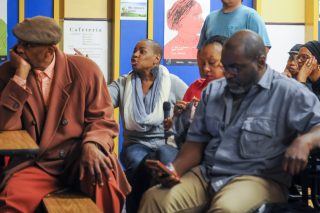
Don’t you think it’s safer to cross when you don’t have cars parking all the way to the corners? I asked. “I don’t deny those things. I have a three children and three grandchildren,” Shaw replied. “I do see safety benefits. However, as a property owner who has lived in this neighborhood for 48 years in the same home, I see the other side of it. I think you do not take the rights of one away to over-extend the rights of the other.”
What about the diverter and how it would reduce auto traffic on 9th by 10-15% so people can play basketball on the street?
“The reality is Portland has grown to where kids actually playing in the street, on 9th, isn’t going to happen. My kid knows to not play in the middle of 9th. 9th is an important through-way. There’s MLK, there’s 9th, there’s 15th. MLK is backed up, 15th is crowded too, 9th is the only through-way,” she said. “I don’t want a diverter that stops traffic from going through there. If you want to put in a speed bump to slow people down, I’m not even opposed to that. But to just arbitrarily cut traffic out, then you’re locking me into my own neighborhood. When I’m trying to get in-and-out. When I have to call a fire truck or an ambulance they can’t turn left*, those things become very real concerns safety-wise.” (*PBOT has vetted the design with the Fire Bureau and they have no problems with it.)
Shaw feels just having the painted crosswalks would a “happy compromise” and wants to see PBOT propose a different design.
Before everyone left, they were given a sticker to share their level of support on a poster. Here’s how it looked after nearly everyone had left:
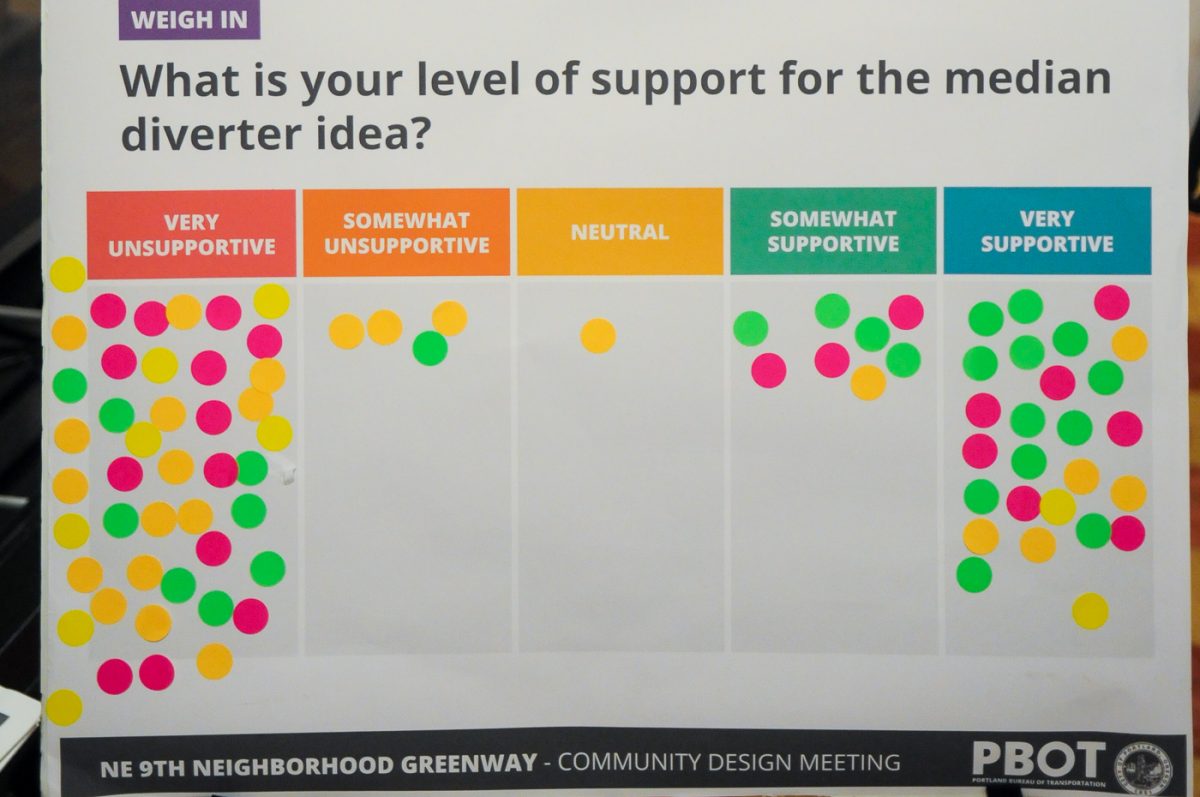
Clearly there was a lot of support for the diverter in the room; but no one spoke up about for it. John Lascurettes was there. He told me afterward that he didn’t want to contribute to the “argumentative tone”. He was also disappointed PBOT didn’t do more to rebut concerns. “When people talked about traffic causing more pollution, PBOT really needs to get in front of those statements with data that that’s just not how pollution works,” he said. “And more throughput only adds more cars which is what really adds pollution.” Lascurettes also thinks PBOT is giving neighbors too much power. “This is not a voting process, yet at the meeting it was presented as if it was. PBOT is serving people north and south of this too. I kind of have a problem with PBOT’s whole presentation at the meeting. Yes, we 100% want to listen to people that live in the ‘hood; but it was presented almost like ‘you get to vote on it’.”
PBOT has launched an online survey that will be open until October 27th. PBOT says they will make a decision very soon and it won’t simply be a tally of votes. I heard one staffer tell someone, “This isn’t majority wins. Our Director [Chris Warner] will decide, informed by this feedback.”
— Jonathan Maus: (503) 706-8804, @jonathan_maus on Twitter and jonathan@bikeportland.org
— Get our headlines delivered to your inbox.
— Support this independent community media outlet with a one-time contribution or monthly subscription.

